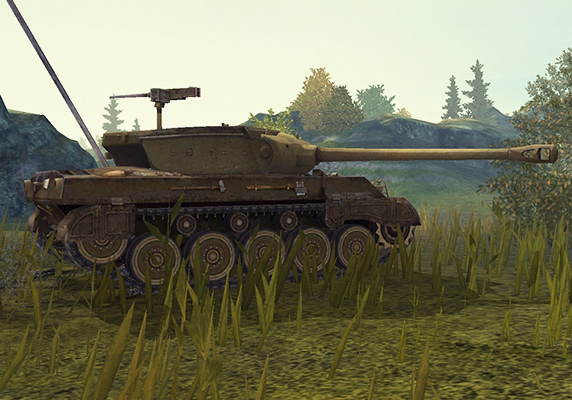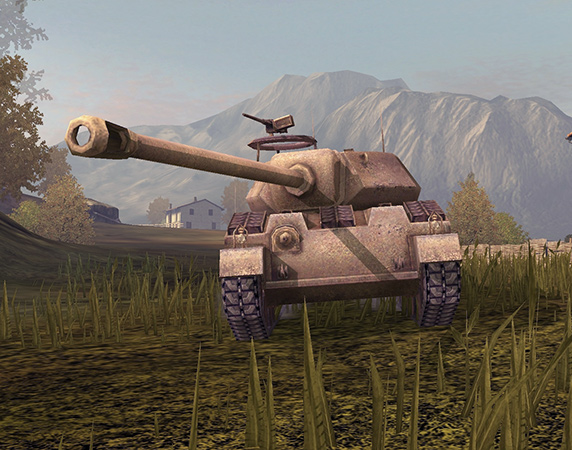With the addition of the new branch of American tank destroyers, we thought it would be a great idea to discover some of the history surrounding a few of these iconic vehicles. You’ll find tanks that have gone down as integral parts of famous operations, while others never made it past the drawing board, leaving them up to Wargaming to fully realize in-game.
The M18 Hellcat
Like a bat (or cat) outta hell, the M18 Hellcat was an American tank destroyer that was the fastest tracked, armored vehicle of World War II with a top speed of up to 60 mph. Nicknamed “Hellcat” by Buick, the tank was able to reach these insane speeds by scaling down the armor, which was no more than one inch thick.
The Hellcat was utilized in the Italian and European theatres of war, and, along with the Sherman Firefly and M10 Wolverine, gave the allied forces a decent boost to their mobile anti-tank arsenal that went up against newer German armored vehicles.

The M18 Hellcat was one of the deciding factors in the historic Battle of the Bulge. In two days, December 19–20, 1944, the 1st Battalion of the 506th Parachute Infantry Regiment supported Team Desobry, a battalion-sized tank-infantry task force of the 10th Armored Division.
The unit only had four M18s of the 705th Tank Destroyer Battalion helping them and paratroopers attacked units of the 2nd Panzer Division. Their objective was to capture a key highway and seize, among other objectives, fuel dumps. The 1st Battalion and the M18 Hellcats of the 705th TD Battalion together destroyed at least 30 German tanks. People praised the vehicle’s ability to “shoot and scoot” at high speed, while being able to swiftly reappear at other locations on the battlefield.
М8А1
The M8A1 first saw action for U.S troops in the Italian campaign where it provided an alternative to older, obsolete, semi-tracked, self-propelled guns. Though the tank was primarily utilized as fire support for the M4 (known as the Sherman to the Brits), the M8 had superior mobility due to being less than half the mass of the M4.
This difference in weight allowed the tank to operate in areas and terrain that proved challenging for vehicles of greater size, which was a key in the uneven Italian landscape. Thanks to these qualities, the M8 was successfully used by U.S. forces in Italy until the end of the war.

The M8 has also seen operational use in the Northwest of Europe between 1944–1945. However, by this time their role was mainly transferred to the M4. The M4’s 105 mm howitzer, when combined with the vehicle’s penchant for subtly, allowed for better direct fire support. This meant the M8 was kept only as part of armed cavalry reconnaissance squadrons.
The Prototypes
T110E4
The T110E4 was a tank destroyer suggested by the Chrysler Corporation at a conference on the future of heavy tanks, held in Detroit. The vehicle was to be based on the TS-31 project, and the main requisite of the tank was that it should fit through the Bern nation tunnel. Another stipulation was that the vehicle had a 50 ton weight limit.
Work was initiated on December 3, 1954; however, prior work had begun on October 30th for the T204 and T179, 120 mm canons that were to be used in the project. Several construction variants of the tanks were considered, but ultimately the project was cancelled.

The T110E4 represented the 4th proposal of the T110 project.
T28 Prototype
The T28 appears in-game as a tank destroyer with a rotating gun turret, and was an early modification of a heavy SPG intended to fight at the Siegfried Line. The Siegfried Line was a World War I line of defensive forts and tank defenses built by Germany in northern France during 1916–1917 as a component of the Hindenburg Line.

No blueprints or prototypes were ever made for the T28. This was due to the fact that in the later stages of the T28’s life, development and evaluation was overtaken by the T29 and T30.
So which tank from the new American branch is your favorite? Let us know below, and don’t forget to check out the rest of the blog.